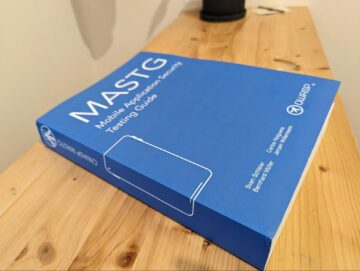Without a comprehensive plan for security, cyberattackers can exploit the security bugs in your mobile app and severely damage your company and users. Leveraging a mobile application security assessment can help you establish an effective security plan to increase the resilience of your mobile app, protect data and facilitate compliance with application security standards. Read on to learn more about the basics of a mobile application security assessment, how it works and the top security and privacy risks to avoid.
OWASP Mobile Application Security Verification (MASVS) Standard
The OWASP Mobile Application Security Verification Standard (MASVS) acts as the industry standard for mobile application security assessments. This standard provides developers with eight categories of crucial security requirements. Following MASVS requirements in development and testing ensures that mobile apps meet a common security standard to guard against weaknesses that can leave mobile apps open to attack. Let’s review the basic mobile app security requirements laid out by MASVS.
Mobile Application Security Requirements
The OWASP MASVS 2.0 stipulates eight security requirements:
- Architecture, Design, and Threat Modeling Requirements
- Data Storage and Privacy Requirements
- Cryptography Requirements
- Authentication and Sessions Management Requirements
- Network Communication Requirements
- Platform Interaction Requirements
- Code Quality and Build Setting Requirements
- Resilience Requirements
These security requirements address the security risks within mobile apps to minimize the mobile attack surface and reduce risk.
How Do You Assess Mobile Application Security?
In order to accurately assess mobile app security, you need to understand the potential threat actors (who is most likely to pose a threat to your app), identify sensitive data that needs to be protected (consumer information, intellectual property, etc.), map out the mobile app’s attack surface (custom code, open-source dependencies, containers), find the weaknesses in your security process (miscommunication between departments, development speed vs security, etc.) and perform threat modeling to formulate a security plan to reduce risk (new security measures and automated mobile AppSec testing tools).
Mobile app penetration testing (pen testing) remains an essential step in identifying weaknesses in high-risk mobile apps that could potentially expose sensitive data.
Pen testing consists of a simulated attack on a mobile app conducted by ethical hackers, aiming to evaluate the security and uncover security and privacy bugs. Due to the nature of pen testing, businesses that choose to outsource the work should only use the services of a trusted, reliable pen testing provider. NowSecure is the only pen testing provider to perform explicit OWASP MASVS and MASTG pen testing, ensuring the highest standard in the industry.
Moreover, there are three different types of penetration tests that can be used based on who is most likely to be the threat actor for your app and the kind of information accessible.
Top 3 Types of Penetration Testing
- Black Box Penetration Testing
Black box testing simulates how an uninformed attacker would attempt to exploit bugs in a mobile app. In this approach, the tester does not know the internal working structure of the mobile app. While this is the most realistic approach, it can also let some security bugs fall through the cracks due to a lack of information about the mobile app.
- White Box Penetration Testing
White box testing aims to test a mobile app’s security from an informed attacker’s viewpoint. The attacker has access to the internal working structure of the mobile app as well as documents and plans. Due to this access, white box testing expedites timelines compared to black box testing. The attacker also tests the mobile app more comprehensively. However, this simulated attack provides a less realistic scenario than black box testing.
- Gray Box Penetration Testing
As the third variation of penetration testing, gray box testing combines aspects of both black box and white box testing. In this approach, the tester accesses limited information about the mobile app, such as login credentials. Gray box testing uncovers the potential damage that could be caused by a privileged user with access to the mobile app.
Now that you understand the different use cases between pen testing methods, let’s review the top security issues that pose a risk to your mobile app.
What Are Common Mobile AppSec Issues?
The OWASP Mobile Top 10 previously identified the top mobile application security risks to watch for. OWASP has since retired that list and replaced it with MASVS.
The top mobile AppSec issues NowSecure testing finds include:
- Data stored in an insecure, exposed location
- Improperly coded network calls
- Insecure authentication or authorization
- Insecure coding practices
- Reverse engineering
Looking to protect your mobile apps from these security risks?
NowSecure supports the OWASP MASVS and embraces standards-based testing to help you identify and easily fix mobile security bugs. NowSecure Platform provides automated coverage for MASVS in the development pipeline while NowSecure Pen Testing as a Service gives you a manual assessment that can be used to validate compliance with any level of the OWASP MASVS. In addition, NowSecure can guide you through the App Defense Alliance (ADA) mobile application security assessment (MASA) validation. Learn more.





